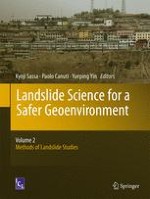2014 | OriginalPaper | Buchkapitel
 Landslide Susceptibility Model Validation: A Routine Starting from Landslide Inventory to Susceptibility
Landslide Susceptibility Model Validation: A Routine Starting from Landslide Inventory to Susceptibility
verfasst von : Gulseren Dagdelenler, Hakan A. Nefeslioglu, Candan Gokceoglu
Erschienen in: Landslide Science for a Safer Geoenvironment
Aktivieren Sie unsere intelligente Suche, um passende Fachinhalte oder Patente zu finden.
Wählen Sie Textabschnitte aus um mit Künstlicher Intelligenz passenden Patente zu finden. powered by
Markieren Sie Textabschnitte, um KI-gestützt weitere passende Inhalte zu finden. powered by
